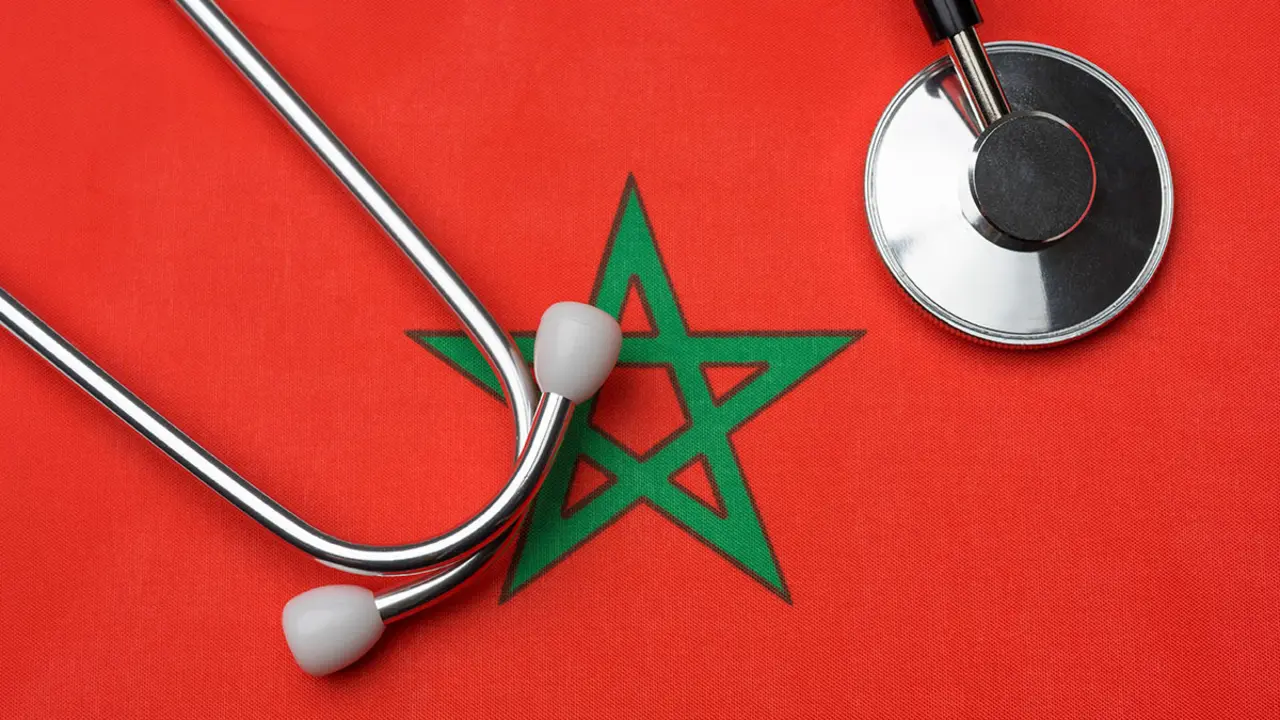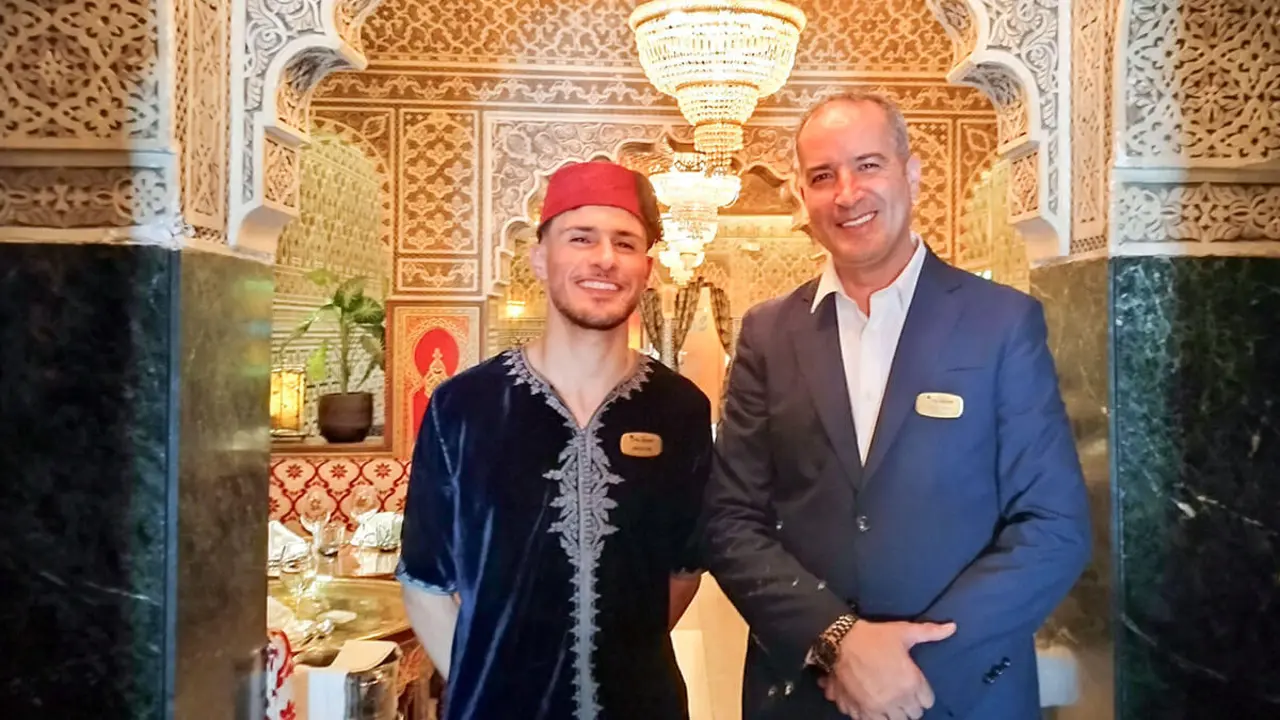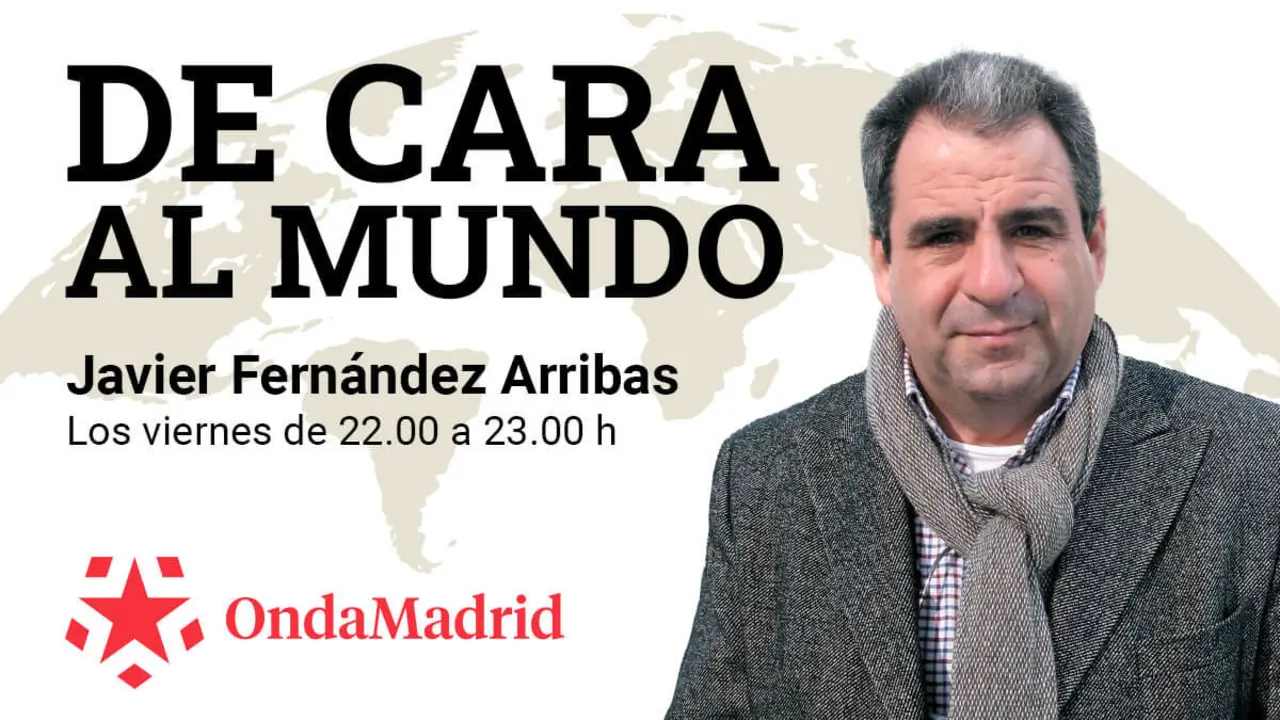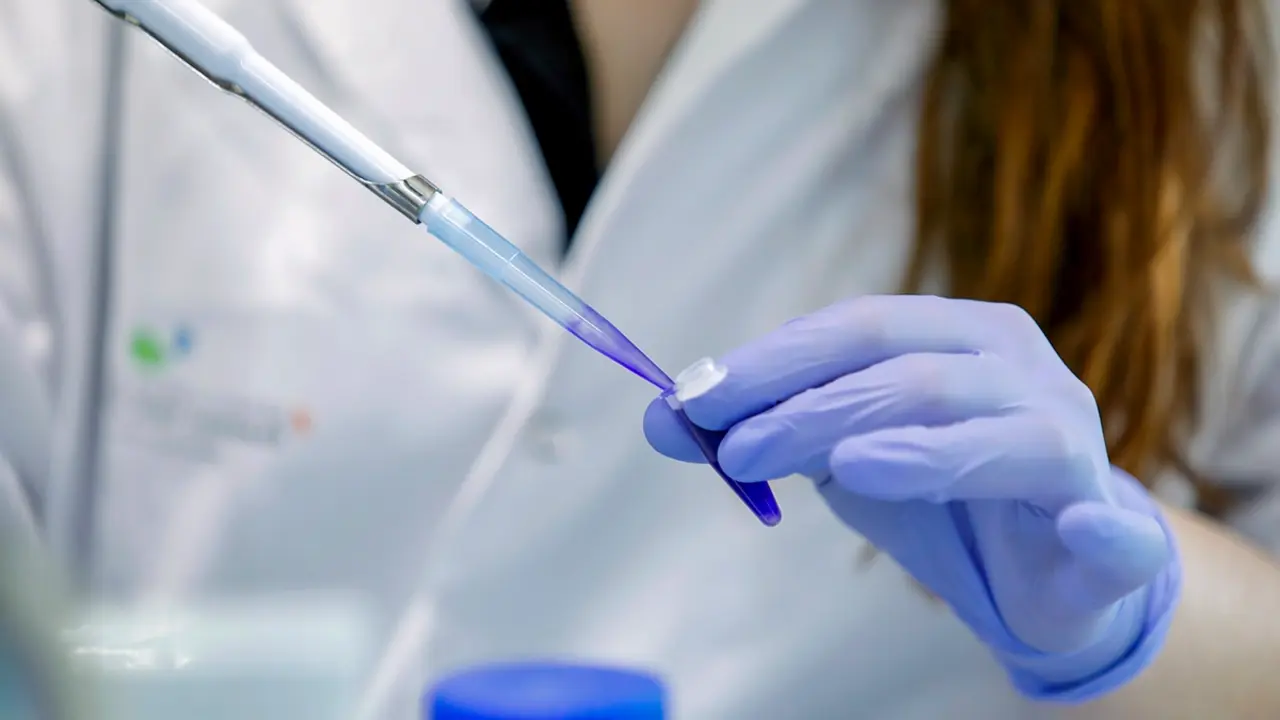CaixaForum Zaragoza vibrates with the link between music and mathematics in an interactive exhibition
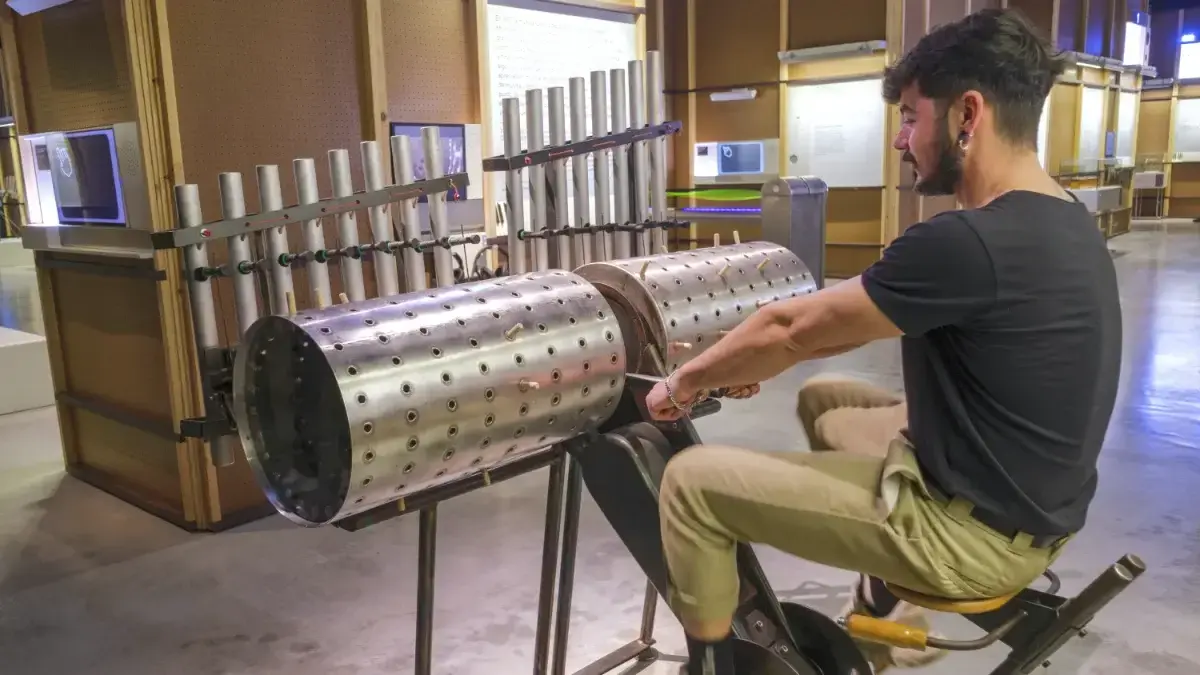
The exhibition uses its highly interactive nature to help visitors understand the links between the two disciplines by visualising the waves generated by the vibration of a string, imitating the sound of different instruments and playing with notes, rhythms and tones to create harmonious sounds.
The director of CaixaForum Zaragoza, Ricardo Alfós, and the scientific advisor for the exhibition, Carlos Calderón, presented Music and Mathematics: A Sound Journey from Chaos to the Cosmos on Tuesday, a new exhibition that explores the indestructible link between music and mathematics, which can be seen at CaixaForum Zaragoza from tomorrow until 2 November.
Mathematics is present in music, from the physics of sound to the making of instruments, from rhythmic patterns to tonal harmony. It is a close relationship that visitors will be able to understand better thanks to this exhibition produced by the ”la Caixa” Foundation.
Music and Mathematics is an interactive exhibition with lots of music and audiovisual material that invites viewers to reflect on practical experiences and accompanies them in their discoveries. It is an exhibition that questions, explains, suggests, discovers and makes us see music and mathematics as two equivalent, rational and beautiful languages.
More than twenty interactive modules and fifteen audiovisuals allow the public to get to know music from the inside and discover how sound is transmitted, how we hear it and what techniques composers use to write music, with variations and transformations that have a mathematical basis. It is not only classical music or contemporary creations that are based on mathematics: pop music has the same foundation.
The exhibition is structured around seven concepts inspired by the seven notes of the musical scale. Like Prometheus, who stole fire from the gods, the philosopher Pythagoras stole the secret of music from them: he experimented with a new instrument, the monochord, which allowed him to identify and define musical intervals. Based on his research, music could be studied and the laws that govern it were defined.
The relationship between music and mathematics cannot be analysed in isolation from physics, history, philosophy, biology, medicine and aesthetics, disciplines that are all present in the exhibition. What must the Big Bang have sounded like? How does the ear work? What are melody, tone, harmonics, timbre, resonance and rhythm? Science is behind all these concepts.
The exhibition delves into the mathematical foundations of beauty related to the golden ratio or Mozart's dice, a combination game that allows for an infinite number of compositions, all of them beautiful. It invites us to discover the beauty of mathematics, which is the abstract version of music.
The final section, dedicated to the music of the cosmos, introduces a metaphysical dimension to the exhibition. The universe is a mystery. To capture its complexity and beauty based on the work of the astronomer and mathematician Johannes Kepler in the 16th century, visitors can enjoy a cosmic symphony in a room isolated from the rest of the exhibition.
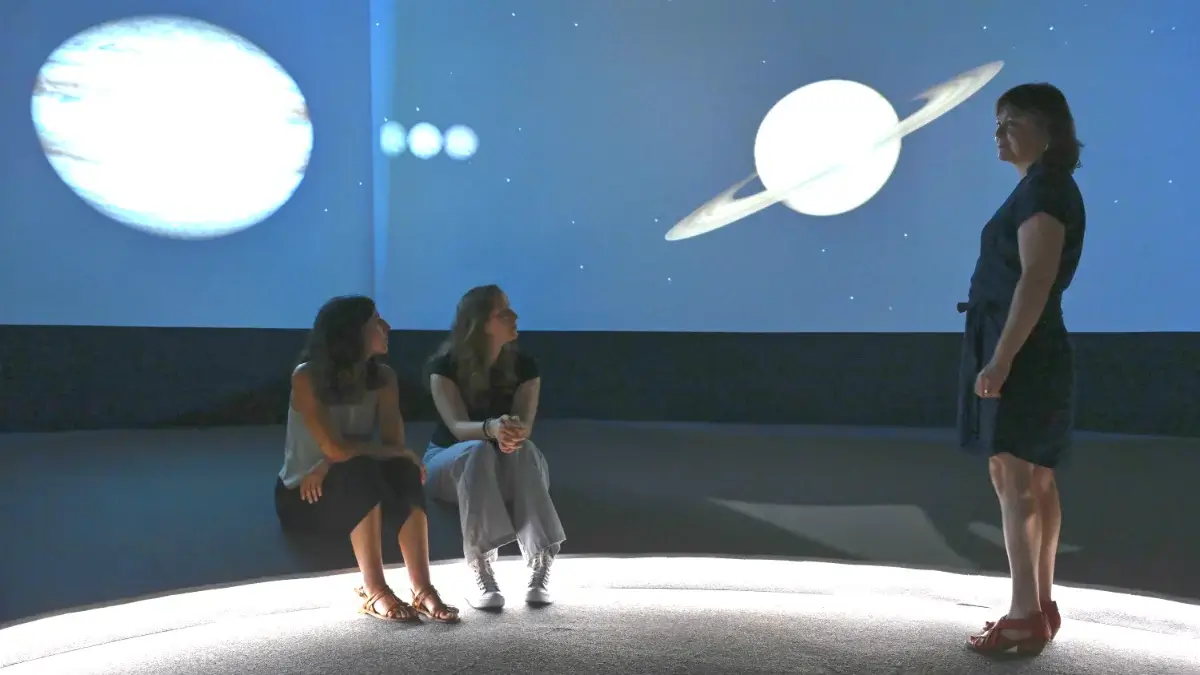
The exhibition has benefited from the scientific advice of Magda Polo, professor in the Department of Art History at the University of Barcelona and lecturer in Aesthetics and Theory of the Arts, History of Music and Philosophy of Music; and Carlos Calderón, musician, music educator and architect, specialist in the monochord and the music of the spheres. The exhibition also features the work of artist Michael Bradke, who has 25 years of experience in creating interactive elements to explain music in museums and who has provided a dozen interactive elements of great beauty and museographic power that reveal the intense relationship between music and mathematics.
All the information about the exhibition can be found in the press kit. Journalists can download it in the Resources section at the end of the news item.
Music and mathematics: beyond the exhibition hall
The exhibition is complemented by activities that will allow visitors to delve deeper into the subject, such as lectures by pianist and mathematician Laura Farré Rozada, one on how to use mathematics to distort our perception and another on the musical facets of chaos theory, from its most basic foundations to its creative potential.
Laura Farré Rozada will also star in a concert that will offer a sound journey that follows the same storyline as the exhibition: from silence we will pass through chaos, sound and music until we reach the cosmos. The programme includes pieces by Dimitar Nenov, Gayane Chebotarian and Claude Debussy, a composer featured in the exhibition who claimed that ‘mathematics is the basis of music’. The performance will be accompanied by the visual creations of Alba G. Corral, a visual artist and computer engineer known for integrating coding and production in collaboration with musicians in real time.
Activities have also been prepared for families, such as the new show La sandalia de Pitágoras (Pythagoras' Sandal), which will introduce Pythagoras (Pi for the centre's audience), a character who lives in a village where mathematics mixes with music, mythological goddesses with mobile phones, jazz bands with popular festivals... Accompanying the show and the exhibition, the centre will have a family area where visitors can experiment with books, games and other materials to bring the public closer to the world of music and mathematics.
Families will also be able to enjoy the ‘Science Notes’ workshop, where small experiments will be carried out which, combined with musical examples, will serve as a thread to bring us closer to concepts such as sound waves, the propagation and production of sound, timbre, frequency and amplitude.
The exhibition will be complemented by guided, family and educational tours that will allow visitors to explore the exhibition's content with the help of an educator. In addition, to mark the exhibition, free tours with a themed menu will also be offered, where, after seeing the exhibition, visitors will be able to enjoy a gastronomic experience specially designed for this exhibition.


